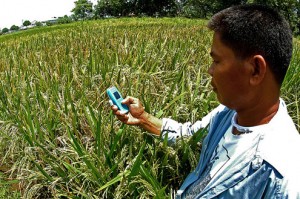Last updated on May 29, 2012
That’s the title of a new paper by my former student Ken Lee and I, in which we study the impact of mobile phone ownership on the prices received by farmers for their onions in the Philippines.
Here is the abstract:
Using data from the Philippines, we study the impact of mobile phones on the prices agricultural producers receive for their cash crop. We first look at the impact on price of mobile phone ownership at the household level. Because this masks a considerable amount of heterogeneity, we then look at the impact on price of the intrahousehold allocation of mobile phones. We find that whether the household owns a mobile phone has no impact on price, but whether a farmer or his spouse own a mobile phone is associated with a 5- to 7-percent increase in price.
In other words, it’s not whether there is a mobile phone in your household that seems to matter, it’s whether you have a mobile phone yourself (or whether your spouse does, depending on whether we keep outliers or not).
Indeed, when we test to see if there is a statistically significant relationship between the price at which a farmer has managed to sell his onions and whether anyone in his household has a mobile phone, we fail to reject the hypothesis that there is no such relationship.
But mobile phone ownership at the household level masks a good deal of heterogeneity. This means that in some households, the farmer owns the phone; in other households, one of the farmer’s children owns a mobile phone; in yet other households, no one owns a mobile phone. So we test to see if there is a statistically significant relationship between the price at which a farmer has managed to sell his onions and (i) whether the farmer himself owns a mobile phone, (ii) whether the farmer’s spouse owns a mobile phone, and (iii) whether any of the farmer’s children owns a mobile phone.

According to our estimates, mobile phone ownership by the farmer is associated with a 5-percent increase in the price received by the farmer for his onions. When we remove outliers, mobile phone ownership by the farmer’s spouse is associated with a 7-percent increase in the price received by the farmer for his onions.
None of this is causal, however. In other words, the data do not allow identifying a causal relationship between mobile phones and agricultural prices. The best we can do is talk of correlation, not causation, and we are forthcoming about this in the paper.
So why does this finding deserve its own paper if it’s not causal? Because there has been very little research on the intrahousehold allocation of technology. The only other example I can think of is this paper by Peterman et al., which I discussed here.
More importantly, this can be important for policy. Indeed, some policies have been articulated around mobile phones at the household level (or worse, the village level, as in the Grameen village phone project). But if what matters is the allocation of mobile phones within the household, policy makers might mistakenly conclude that those policies don’t work.
As such, the intrahousehold allocation of mobile phones — and of information communication technology more broadly — deserves further investigation.